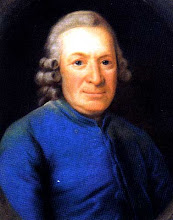"Glucocorticoids exert profound and diverse physiological effects on a wide range of cell types. Produced and released from the adrenal cortex in response to stress, levels of glucocorticoids are under the control of the hypothalamic–pituitary–adrenal axis.
Glucocorticoids participate in numerous physiological processes such as glucose homeostasis; protein, lipid, and carbohydrate metabolism; development; neuorobiology; and programmed cell death. Glucocorticoids exert potent immunosuppressive and anti-inflammatory actions in a cell type–specific manner largely through the interruption of cytokine-mediated pathways. These anti-inflammatory actions are also complemented by the ability of glucocorticoids to induce apoptosis in many cells including thymocytes, blood monocytes, and peripheral T cells.
As a class of drugs, glucocorticoids are among the most widely prescribed in the world for the treatment of immune and inflammatory diseases, including asthma, rheumatoid arthritis, ulcerative colitis, and allergic rhinitis. They are also a component of many chemotherapy regimens for the treatment of leukemias, lymphomas, and myelomas because of their role in the induction of apoptosis. However, long-term use of glucocorticoids has been limited by adverse side effects ranging from suppression of the hypothalamic–pituitary axis and growth retardation to osteoporosis, in addition to the development of glucocorticoid resistance. These undesired side effects of glucocorticoids are hypothesized to occur mainly through activation of gene transcription, whereas the beneficial anti-inflammatory effects of glucocorticoids involve mainly mechanisms of gene repression.
Understanding the molecular basis of glucocorticoid-induced side effects requires an understanding of their actions on homeostatic signaling processes in all cell types. In this review, we discuss the basic cellular and molecular signaling mechanisms of glucocorticoid action during noninflammatory and inflammatory situations."
Mechanisms of Glucocorticoid Receptor Action in Noninflammatory and Inflammatory Cells -- Necela and Cidlowski 1 (3): 239 -- Proceedings of the American Thoracic Society:




